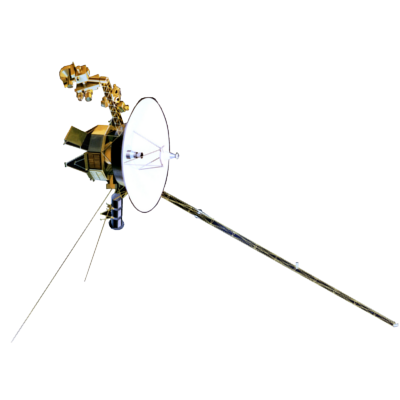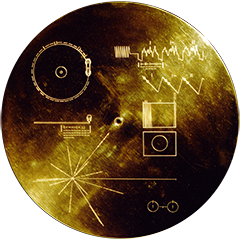Voyager LECP Data Analysis Handbook
Engineering Design
18 June 1975
RE: JRT/pgl/173
WBS 65037
Dr. S. M. Krimigis
Johns Hopkins University
Applied Physics Laboratory
Silver Springs, Maryland 80302
Dear Dr. Krimigis:
The enclosed IOM (296-75-GDH-172) is the input that has been provided to the Telemetry Software Coordination Team (TSCT). This IOM defines the processing required to be performed by the Flight Data System Support Equipment (FDS-SE) during system test activities. This IOM has been reviewed by D. E. Griffith and W. G. Fawcett.
It is planned to have the TSCT review this document and IOM 296-75-GDH-100 Rev. B (MJS77 Detailed Requirements for LECP Data Processing and Display During System Test) as a complete package defining all processing required during system test activities. The TSCT and Project will then define which (if not all) requirements will be implemented by the Test and Telemetry System (TTS).
If you have any questions concerning the enclosed IOM, please contact the author, Steve Kitzis, at (213) 354-2403.
Sincerely,
Jack R. Tupman
cc:
W. Fawcett
E. Franzgrote
G. Gloeckler (W/A)
D. Gordon
D. Griffith
J. Haas
W. Hodges
R. King (W/A)
S. Kitzis
J. Long
D. Peletier (W/A)
G. Reisdorf
E. Stone
H. Woo
JET PROPULSION LABORATORY INTEROFFICE MEMORANDUM
SNK: 296-75-GDH-172
18 June 1975
TO: D. G. Griffith, Chairman of the MJS77 Telemetry Software Coordination Team (TSCT)
FROM: S. N. Kitzis
SUBJECT: MJS77 Requirement for FDS-SE Processing and Display of LECP Related Data During System Test
REFERENCE: (1) IOM 296-75-GDH-100B, "MJS77 Detail Requirements for LECP Data Processing and Display During System Test," 28 May 1975
The contents of this IOM are organized in the following manner:
- DIRECT ACCESS
- STIMULUS
- TELEMETRY DATA
In addition, "(FDS-SE)" and "(SE&TTS)" will be used to indicate whether the specified required processing is to be available from only the FDS-SE, or from both the FDS-SE and the TTS.
1. DIRECT ACCESS
There will be 9 LECP direct access lines available during System Test:
a) ENG MUX Data
b) CAL MUX Data
c) MUX Step (TBD if this will actually be available)
d) MUX Reset (TBD if this will actually be available)
e) 10 msec Inhibit Enable/Disable
f) Loop Disconnect
g) Pulser Amplitude Control
h) Pulser Activate
i) 50% Level Trigger.
Lines a and b will output continuous analog data equivalent to the ENG MUX and CAL MUX in Section 3.0 of Ref. 1. Lines c and d will carry the MUX Step (once every 12 seconds) and MUX Reset (once every 48 minutes) pulses to the FDS-SE. These two signals will be used in digitizing the analog output from lines a and b. Line 3 will allow manual control of the 10 msec Inhibit by a switch located on a rack with the FDS-SE. Lines f through i will not output data during System Test but will be available for use by the LECP BCE.
The capability of FDS-SE processing and display of this LECP direct access data shall be required for System Test as indicated below. Except where noted as otherwise, all of the following processing shall be initiated only on request and displays shall be produced on the FDS-SE line printer in a non-dedicated manner. (This processing shall be required only if lines c and d are actually provided.)
i) ENG MUX Data Display (FDS-SE) - processing and display of the data from line a in a manner similar to that described in Section 3.2 of Ref. 1. The analog data shall have to be converted to successive 8-bit words, using the signal from line c to define the word gates. Position 1 of the ENG MUX occurs at the start of the major frame in which the MUX Reset pulse occurs. Only Tolerance Suppression and hardcopy display shall be required.
ii) CAL MUX Data Display (FDS-SE) - processing and display of the data from line b in a manner similar to that described in Section 3.2 of Ref. 1. The analog data shall have to be converted to successive 8-bit words, using the signal from line c to define the word gates. Position 1 of the CAL MUX occurs at the start of the major frame in which the MUX Reset pulse occurs. Only Tolerance Suppression and hardcopy display of the CAL MUX measurements (and not the FWHM and Threshold) shall be required.
2. STIMULUS
The LECP stimulus is a small external radiation source. No processing or display of stimulus data shall be required for System Test. During LECP Calibration Sequences, the LECP detectors will have to be turned ON and OFF in a pre-determined test sequence. This will be accomplished by having the FDS send appropriate commands to the LECP at appropriate times. The following capability is to be provided by the FDS-SE only in the event that the test sequence is not implemented by use of the normal command route (i.e., through the CCS):
The capability of the FDS-SE implementing the LECP calibration test sequence by use of the direct access to the FDS shall be required. FDS-SE software shall be provided so that the appropriate series of commands are sent to the FDS in order that the FDS will command the LECP as necessary. The command sequence shall be implemented only on-request. In addition, the commands sent to the FDS can be printed out on the FDS-SE line printer on-request. (Handwritten note in the margin of this paragraph: No! No provision for LECP receiving commands via FDS-SE.)
3. TELEMETRY DATA
The capability of FDS-SE processing and display of LECP telemetry stream data shall be required for System Test as indicated below. Except where noted as otherwise, all of the following processing shall be initiated only on-request and displays shall be produced on the FDS-SE line printer in a non-dedicated manner.
a) Engineering Data Display (SE&TTS) - processing and display of the 129 LECP engineering channels in a manner similar to that described in Sections 3.0, 3.1, 3.2, and 3.3 of Ref. 1. Only Tolerance Suppression and hardcopy display shall be required. The FWHM and Threshold calculations described in Section 3.1.1 of Ref. 1 shall not be required.
b) Full Command Word Display (SE&TTS) - processing and display of the full 16-bit LECP command word in a manner similar to that described in Section 4.1.1 of Ref. 1.
c) Full Status Word Display (SE&TTS) - processing and display of the six full 10-bit LECP status words in a manner similar to that described in Section 4.2.1 of Ref. 1.
d) Full Frame PHA Display (SE&TTS) - processing and display of the LECP PHA data in a format similar to that described in Section 4.3.2 (Figure 4.27) of Ref. 1. Display shall be only on-request.
Distribution:
| A. Acord | D. Johnson |
| J. Acord | R. Laeser |
| W. Bennett | J. Long |
| J. Bryden | H. Margraf |
| R. Del Negro | A. Nichols |
| M. Devirian | C. Odd |
| J. Earnest | L. Parker |
| R. Ebbett | R. Polansky |
| K. Erickson | G. Reisdorf |
| W. Fawcett | C. Reynolds |
| R. Foster | S. Reynolds |
| E. Franzgrote | M. Sander |
| J. Gleason | B. Smith |
| D. Gordon | E. Stone (Cal Tech) |
| D. Griffith | L. Stytle |
| J. Haas | F. Tomey |
| R. Heacock | J. Tupman |
| W. Hodges | H. Woo |
| G. Holmlund | C. Yeates |
| J. Howe |
Return to Voyager
LECP Data Analysis Handbook Table of Contents.
Return to Fundamental
Technologies Home Page.
Updated 8/9/19, Cameron Crane
VOYAGER 1 ELAPSED TIME
*Since official launch
September 5, 1977, 12:56:00:00 UTC
VOYAGER 2 ELAPSED TIME
*Since official launch
August 20, 1977, 14:29:00:00 UTC
QUICK FACTS
Mission Duration: 40+ years have elapsed for both Voyager 1 and Voyager 2 (both are ongoing).
Destination: Their original destinations were Saturn and Jupiter. Their current destination is interstellar space.



